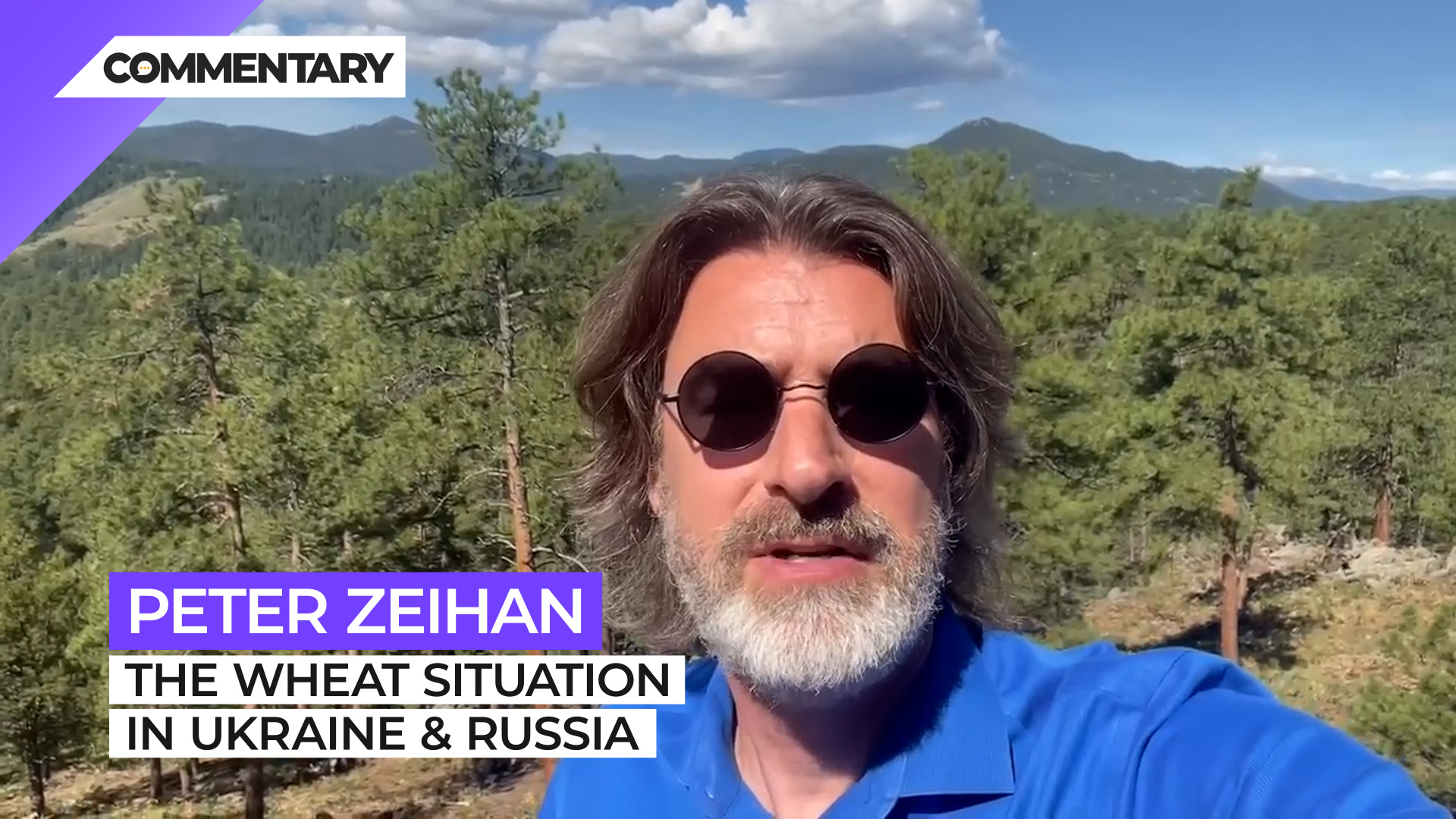
Commentary
-
Our commentary partners will help you reach your own conclusions on complex topics.
Hey everyone. Peter Zeihan coming to you from Colorado. Today I want to talk about the wheat situation in Ukraine and Russia. Now for the last several weeks, UN staff and diplomatic personnel from Turkey and specific have been working to broker a deal that would allow Ukrainian wheat to leave Ukrainian ports under Ukrainian control and get to the wider world. There’s a lot of moving pieces here. For one, the Ukrainians have mined their own ports to inhibit the Russian’s ability to launch amphibious assaults. So they have to guide the vessels through. And then of course, the Russians are assaulting everything that moves and a lot of things that are not, so you have to get the Russians to agree to stop the assaults on the ports. Now, right now, the Ukrainians have about 18 million metric tons stored up in their silos at or adjacent to their ports. That’s a lot that needs to move. That is in excess of half of a normal harvest for the country. On Monday, August 1, we got our first ship, the Razoni, to dock, to load up and to leave for Lebanon. It’s carrying 26,000 metric tons.
So we need 700 more ships of this size if we’re gonna get that grain out. Unfortunately, the Ukrainian harvest starts in less than 45 days. So you’re talking about needing to get a dozen or so vessels in there every single day. So far, we’ve had one. I don’t have a lot of hope for this. And then the real problem of course is next is the harvest, two problems. Right now the Ukrainians have nowhere to put it. Their silos are full from last year’s harvest. They weren’t able to export because the war started back in February. And second, even if the farmers were able to work their fields and not be molested by Russian troops, and remember, we’ve already had mass evacuations from Eastern and Southern Ukraine, the problem remains is that they can’t get fuel into the country. So you’re talking about needing to harvest industrial levels of wheat without industrial equipment. And that’s just not possible.
So likely end result here is that this is the last year that Ukraine participates in international grain markets. They simply don’t have the capacity to get stuff out at scale. In fact, the only place that they might be able to ship stuff is by rail and at most with significant upgrades that have not yet been done, they can probably only ship about one-fifth of their normal produce out that way. The rail lines are just not designed for that kind of bulk of cargo. And a lot of them have to transit a little territory called Transnistria, which is under Russian control. You remove the world’s fourth-largest wheat exporter from the market and you’re gonna look at cascading problems, not just with food prices and malnutrition, but civil conflict and breakdown; most notably in the middle east. The last time we had a doubling of global wheat prices, we saw the Arab spring back in 2011.
What we’re dealing with is an order of magnitude more complicated and deeper rooted. And to think that we’re only going to have a doubling of prices is ridiculously optimistic. Now in the United States, this isn’t necessarily a disaster. You double the price of wheat, you actually only increase the cost of a loaf of bread by 25 cents. We don’t subsidize food processing like say, Egypt does. So here it’s a little uncomfortable. It’ll probably be noticed, but it’s not going to be a deal killer. Other parts of the world, not so much. All right. That’s it from me. Until next time.
-
Hurricane Helene hits US coast, Appalachia and beyond
Hurricane Helene hit Florida and Georgia overnight between Sept. 26 and 27 as a Category 4 hurricane, and accompanying storms will continue reaching deeper into the continental United States today. Dangerous flash flooding from the hurricane, known as storm surge, was some of the worst flooding that the Tampa Bay area has ever seen, and… -
Israel holds upper hand against Lebanon, Hezbollah and Iran
On Wednesday, Sept. 25, Hezbollah launched a ballistic missile at Tel Aviv in retaliation for Israel’s explosive pager attack that blew up devices across Lebanon. Although Israel’s defense systems intercepted the surface-to-surface missile, the attempted strike on Tel Aviv marked a significant escalation by Hezbollah. Since the siege on Gaza began, shortly after the Oct. 7, 2023,… -
The Sinaloa Cartel civil war
Fears of a civil war within the Sinaloa Cartel are growing as violence between competing factions within the cartel continues. The Mexican Army has dispatched around 600 elite troops to Sinaloa to help quell those fears, in addition to roughly 2,200 regular soldiers and National Guard. Watch the above video as Straight Arrow News contributor… -
New Ukrainian weapons hit Russia where it hurts
Ukrainian drones struck a major Russian ammunition depot, triggering a massive explosion that was captured on camera. According to the Ukrainian military, 2,000 tons of munitions had arrived at the depot before the attack. Over the past two years, Ukraine has significantly increased its domestic drone production, allowing it to scale up attacks on military… -
Weighing social costs vs. economic benefits on immigration
Global human migration is one of the defining elements of our current historical era, according to the United Nations. Migrants face both the incentives to leave — forced out by climate change, crime and corruption, extreme poverty or violence — and incentives for where to go, based on available job opportunities and so on. Migration…
Latest Stories
-
 Getty Images
Getty Images
Gene Hackman’s dead dog misidentified as details continue unfolding
-
 Getty Images
Getty Images
Sexual violence used as war tactic against Sudanese children: UNICEF
-
 Getty Images
Getty Images
Trump praises BlackRock for $19 billion Panama Canal investment
-
 Getty Images
Getty Images
President Trump announces arrest of Kabul airport bombing suspect
-
 Getty Images
Getty Images
Supreme Court requires Trump admin to pay $2B in frozen foreign aid
Popular Opinions
-
In addition to the facts, we believe it’s vital to hear perspectives from all sides of the political spectrum.
Latest Opinions
In addition to the facts, we believe it’s vital to hear perspectives from all sides of the political spectrum. We hope these different voices will help you reach your own conclusions.
The opinions published in this section are solely those of the contributors and do not reflect the views of Straight Arrow News.





















Latest Commentary
We know it is important to hear from a diverse range of observers on the complex topics we face and believe our commentary partners will help you reach your own conclusions.
The commentaries published in this section are solely those of the contributors and do not reflect the views of Straight Arrow News.
Dr. Frank Luntz
Pollster and Political Analyst‘Biased’: What Americans think of ‘mainstream media’
‘Getting rid of them’: Americans discuss Trump and immigration
‘Woke’: Why some Biden 2020 voters backed Trump in 2024